Related Research Articles

David Da-i Ho is a Taiwanese-American AIDS researcher, physician, and virologist who has made a number of scientific contributions to the understanding and treatment of HIV infection. He championed for combination anti-retroviral therapy instead of single therapy, which turned HIV from absolute terminal disease into a chronic disease.

Frontline is an investigative documentary program distributed by the Public Broadcasting Service (PBS) in the United States. Episodes are produced at WGBH in Boston, Massachusetts. The series has covered a variety of domestic and international issues, including terrorism, elections, environmental disasters, and other sociopolitical issues. Since its debut in 1983, Frontline has aired in the U.S. for 39 seasons, and has won critical acclaim and awards in broadcast journalism. It has produced over 750 documentaries from both in-house and independent filmmakers, 200 of which are available online.
The Alfred I. duPont–Columbia University Award honors excellence in broadcast and digital journalism in the public service and is considered one of the most prestigious awards in journalism. The awards were established in 1942 and administered until 1967 by Washington and Lee University's O. W. Riegel, Curator and Head of the Department of Journalism and Communications. Since 1968 they have been administered by the Columbia University Graduate School of Journalism in New York City, and are considered by some to be the broadcast equivalent of the Pulitzer Prize, another program administered by Columbia University.

MPTP (1-methyl-4-phenyl-1,2,3,6-tetrahydropyridine) is an organic compound. It is classified as a tetrahydropyridine. It is of interest as a precursor to the neurotoxin MPP+, which causes permanent symptoms of Parkinson's disease by destroying dopaminergic neurons in the substantia nigra of the brain. It has been used to study disease models in various animals.
Neurotoxicity is a form of toxicity in which a biological, chemical, or physical agent produces an adverse effect on the structure or function of the central and/or peripheral nervous system. It occurs when exposure to a substance – specifically, a neurotoxin or neurotoxicant– alters the normal activity of the nervous system in such a way as to cause permanent or reversible damage to nervous tissue. This can eventually disrupt or even kill neurons, which are cells that transmit and process signals in the brain and other parts of the nervous system. Neurotoxicity can result from organ transplants, radiation treatment, certain drug therapies, recreational drug use, exposure to heavy metals, bites from certain species of venomous snakes, pesticides, certain industrial cleaning solvents, fuels and certain naturally occurring substances. Symptoms may appear immediately after exposure or be delayed. They may include limb weakness or numbness, loss of memory, vision, and/or intellect, uncontrollable obsessive and/or compulsive behaviors, delusions, headache, cognitive and behavioral problems and sexual dysfunction. Chronic mold exposure in homes can lead to neurotoxicity which may not appear for months to years of exposure. All symptoms listed above are consistent with mold mycotoxin accumulation.
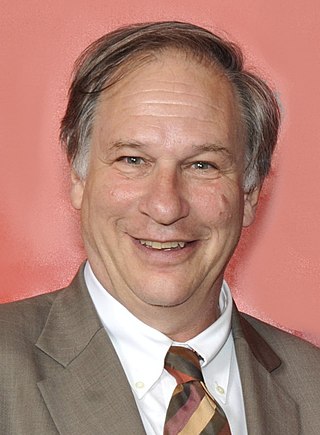
Robert Louis Krulwich is an American radio and television journalist who currently serves as a science correspondent for NPR and was a co-host of the program Radiolab. He has worked as a full-time employee of ABC, CBS, National Public Radio, and Pacifica. He has done assignment pieces for ABC's Nightline and World News Tonight, as well as PBS's Frontline, NOVA, and NOW with Bill Moyers. TV Guide called him "the most inventive network reporter in television", and New York Magazine wrote that he's "the man who simplifies without being simple."
Robert Earle Parry was an American investigative journalist. He was known for his role in covering the Iran–Contra affair for the Associated Press (AP) and Newsweek, including breaking the Psychological Operations in Guerrilla Warfare and the CIA involvement in Contra cocaine trafficking in the U.S. scandal in 1985.

Deborah Blum is an American science journalist and the director of the Knight Science Journalism program at the Massachusetts Institute of Technology. She is the author of several books, including The Poisoner's Handbook (2010) and The Poison Squad (2018), and has been a columnist for The New York Times and a blogger, via her blog titled Elemental, for Wired.
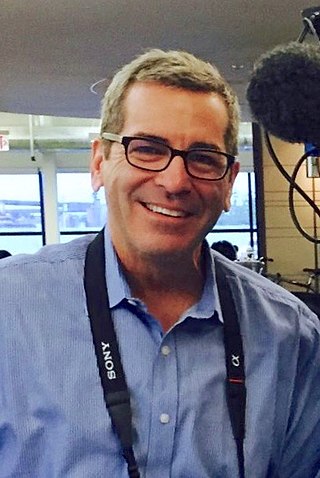
Miles O'Brien is an independent American broadcast news journalist specializing in science, technology, and aerospace who has been serving as national science correspondent for PBS NewsHour since 2010.
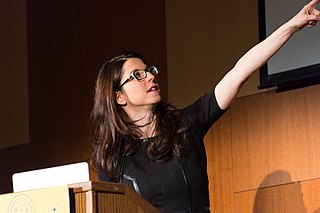
Heather A. Berlin is an American neuroscientist and licensed clinical psychologist noted for her work in science communication and science outreach. Her research focuses on brain-behavior relationships affecting the prevention and treatment of impulsive and compulsive psychiatric disorders. She is also interested in the neural basis of consciousness, dynamic unconscious processes, and creativity. Berlin is host of the PBS Nova series Your Brain, the PBS series Science Goes to the Movies, the Discovery Channel series Superhuman Showdown, and StarTalk All-Stars with Neil DeGrasse Tyson.
J. William Langston is the founder and chief scientific officer, movement disorder specialist, and chief executive officer of the Parkinson's Institute and Clinical Center in Sunnyvale, California, the founding member of the Scientific Advisory Board for the Michael J. Fox Foundation and the Co-Editor-in-Chief of the Journal of Parkinson's Disease. He is a graduate of the University of Missouri School of Medicine. Langston was formerly a faculty member at Stanford University and Chairman of Neurology at Santa Clara Valley Medical Center in San Jose, California. Langston has authored or co-authored some 360 peer-reviewed articles in the field of neurology, most of which are on Parkinson's disease and related disorders. Langston gained national and international recognition in 1982 for the discovery of the link between a "synthetic heroin" contaminant (MPTP) and parkinsonism.

Alex S. Jones is an American journalist who was director of the Shorenstein Center on Media, Politics and Public Policy at Harvard's John F. Kennedy School of Government from July 1, 2000 until June 2015. He won a Pulitzer Prize for journalism in 1987.

Stephen Henderson Talbot is a TV documentary producer, reporter and writer. Talbot directed and produced "The Movement and the 'Madman' " for the PBS series American Experience in 2023. He is a longtime contributor to the Public Broadcasting Service (PBS) and worked for over 16 years for the series Frontline.
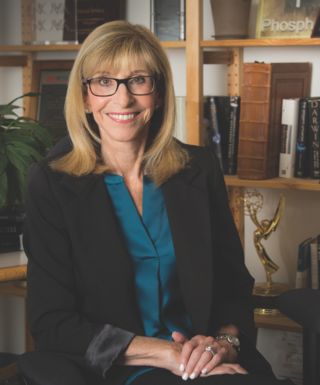
Paula S. Apsell is the television Executive Producer Emerita of PBS's NOVA and was director of the WGBH Science Unit.

Wallace Houston Terry, II was an African-American journalist and oral historian, best known for his book about black soldiers in Vietnam, Bloods: An Oral History of the Vietnam War (1984), which served as a basis for the 1995 crime thriller Dead Presidents and the 2020 Spike Lee movie Da 5 Bloods.
The Science in Society Journalism Awards are awards created by the American National Association of Science Writers (NASW) to honor and encourage "outstanding investigative and interpretive reporting about the sciences and their impact for good and ill." Each year the NASW recognizes work in these categories: books, periodicals, and electronic media. Each winner receives $2,500. The first award was given in 1972. The Awards recognize not only reporting about science, but also thoughtful work that probes the ethical problems and social effects of science. The awards are considered especially prestigious because they are judged by accomplished peers. Starting in 2009 the award categories were changed. The book category will remain unchanged, while the other categories will morph into "Commentary and Opinion", "Science Reporting", and "Local Science Reporting". Except for the Book category, the awards will be platform independent, which means that they may be magazine, radio, TV, or web-based.
Judgment Day: Intelligent Design on Trial is a documentary on the case of Kitzmiller v. Dover Area School District—which concentrated on the question of whether or not intelligent design could be viewed as science and taught in school science class. It first aired on PBS stations nationwide, on November 13, 2007, with many reruns, and features interviews with the judge, witnesses, and lawyers as well as re-enacted scenes using the official transcript of the trial.
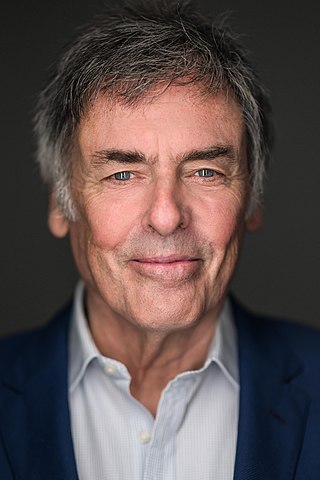
Michael Kirk is a documentary filmmaker and partial creator of the PBS show Frontline, where he worked as senior producer until 1987. Kirk founded and currently owns the production company, the Kirk Documentary Group, in Brookline, Massachusetts, which has produced dozens of award-winning documentaries, both for Frontline and through his company, that focus on political, social and cultural issues.
The Conversation is a network of not-for-profit media outlets publishing news stories and research reports online, with accompanying expert opinion and analysis. Articles are written by academics and researchers under a Creative Commons license, allowing reuse without modification. Copyright terms for images are generally listed in the image caption and attribution. Its model has been described as explanatory journalism. Except in "exceptional circumstances", it only publishes articles by "academics employed by, or otherwise formally connected to, accredited institutions, including universities and accredited research bodies".

Patrik Brundin is a neuroscientist known for his research on Parkinson's disease (PD) and Huntington's disease. He is currently a Distinguished Scientist and serving as Therapeutic Area Leader for Movement Disorders at F. Hoffmann-La Roche, Pharmaceutical Research and Early Development (pRED).
References
- 1 2 "Machine That Changed the World Receives Peabody". Communications of the ACM. Association for Computing Machinery, Inc. July 1993. p. S1+.
- 1 2 3 "Arts & TV in Brief". The Boston Herald. 20 December 2001. p. 56.
- 1 2 "Jon Palfreman". Nieman Reports. Cambridge, MA: Nieman Foundation for Journalism at Harvard. Retrieved 12 August 2015.
- 1 2 "'Four Weddings,' 'Foreest Gump' Screenplays Honored". Los Angeles Times. Los Angeles, CA. 20 March 1995. p. 19. Retrieved 11 August 2015.
- 1 2 Mink, Eric (24 April 2001). "'Harvest' sinks teeth into biotech rhubarb". New York Daily News. New York, NY. p. 75.
- ↑ "Jon Palfreman to take part in worldwide Parkinson's webcast". Around the O. University of Oregon. 24 September 2014. Retrieved 12 August 2015.
- 1 2 3 4 5 "2002: Jon Palfreman". Society for the Advancement of Science. Portage, Michigan: SABA/ABAI. Retrieved 12 August 2015.
- 1 2 3 4 5 Pabst, Diana (26 May 1995). "Inside AAAS". Science. New Series. 268 (5214): 1226–1227. Bibcode:1995Sci...268.1226P. doi:10.1126/science.268.5214.1226. JSTOR 2888407.
- ↑ "About Jon Palfreman". PBS.org. Retrieved 22 August 2015.
- ↑ "A National Teach-In on Global Warming: Speaker Bios". University of Oregon. Retrieved 13 August 2015.
- 1 2 Anonymous (4 September 2011). "Globe West Community briefing". Boston Globe. Boston, MA. p. 2.
- 1 2 3 4 Palfreman, Jon (March 1979). "Between Scepticism and Credulity: A Study of Victorian Scientific Attitudes to Modern Spiritualism". In Wallis, Roy (ed.). On the Margins of Science: The Social Construction of Rejected Knowledge. Keele, Staffordshire. pp. 201–236. ISBN 978-0-904-42506-2.
{{cite book}}: CS1 maint: location missing publisher (link) - 1 2 "Nieman Notes". Nieman Reports. Spring 2006. p. 98.
- 1 2 Palfreman, Jon (January 2006). "A Tale of Two Fears: Exploring Media Depictions of Nuclear Power and Global Warming". Review of Policy Research. 23 (1): 23–43. doi:10.1111/j.1541-1338.2006.00184.x.
- ↑ Anonymous (30 May 2002). "AmNews reporter named Kaiser fellow". New York Amsterdam News. New York, NY. p. 1.
- ↑ "Producer Jon Palfreman". PBS/Frontline. WGBH Educational Foundation. Retrieved 12 August 2015.
- 1 2 "The Journal of Parkinson's Disease announces that Jon Palfreman, PhD, has joined their editorial board". The Cure Parkinson's Trust. Retrieved 6 August 2015.
- 1 2 3 4 Glackin, Jessica (10 June 2015). "KEZI Endowed Professor Jon Palfreman Retires". School of Journalism and Communication. University of Oregon. Retrieved 16 August 2015.
- 1 2 "Book Review. Brain Storms: The Race to Unlock the Mysteries of Parkison's Disease". Kirkus Reviews. 83 (1): 141. 1 June 2015. Retrieved 15 August 2015.
- ↑ "The Journal of Parkinson's Disease announces that Jon Palfreman, PhD, has joined their Editorial Board". CureParkinsons.org. The Cure Parkinsons Trust. 12 June 2014. Retrieved 16 August 2015.
- ↑ Weintraub, Karen (25 September 2013). "Michael J. Fox puts Parkinson's fight in a prime-time slot: Actor returns to TV 'examining a life' with the disease". USA Today. McLean, VA. p. D.5. Retrieved 12 August 2015.
- 1 2 Palfreman, Jon (21 February 2015). "The Bright Side of Parkinson's". The New York Times. No. Sunday Review. p. 4. Retrieved 12 August 2015.
- ↑ Beyerstein, Lindsay (5 October 2015). "The Mysteries of Parkinson's, with Jon Palfreman". Point of Inquiry podcast.
- 1 2 3 4 Vranizan, Michelle (6 April 1992). "Television: Computers programmed into entertaining series". The Orange County Register. No. Morning Edition. Santa Ana, CA. p. F04.
- ↑ Storm, Jonathan (5 April 1992). "A Look Into Two Brains: Human and Mechanical". Philadelphia Inquirer. Philadelphia, PA. p. G.1. Retrieved 14 August 2015.
- ↑ Ladendorf, Kirk (25 April 1992). "Computer history program tunes into MMC's Lenat". Austin American Statesman. No. Final Edition. Austin, TX. p. E1.
- ↑ Goodman, Walter (6 April 1992). "Review/Television: Exploring Madness's face and the Computer's birth". The New York Times. No. Late Edition (East Coast). p. C.18. Retrieved 14 August 2015.
- ↑ Mink, Eric (6 April 1992). "How the computer changed the world". St. Louis Post-Dispatch. No. 5* Edition. St. Louis, MO. p. 5D.
- 1 2 Kubasik, Ben (19 October 1993). "TV Spots". Newsday. No. Combined Editions. Long Island. p. 93.
- 1 2 Cuff, John Haslett (19 October 1993). "Television Prisoners of Silence: a shocking look at autism research". The Globe and Mail. Toronto, Ontario. p. C.4.
- 1 2 Koehler, Robert (19 October 1993). "TV Review: 'Prisoners' puts autism technique to test". Los Angeles Times. No. Home edition. Los Angeles, CA. p. 9. Retrieved 15 August 2015.
- ↑ Holbert, Ginny (19 October 1993). "'Frontline' Investigates Therapy for Autism". Chicago Sun-Times. Archived from the original on 9 April 2016. Retrieved 15 August 2015.
- ↑ Siegel, Ed (5 October 1993). "The passion gap at PBS The network proves it can unlock 'The Secret of Life', but can it find the key to a broader audience?". Boston Globe. No. City Edition. Archived from the original on 9 April 2016. Retrieved 15 August 2015.
- ↑ Steigerwald, Bill (18 April 2000). "Weather special ruins doomsayers' forecast". Pittsburgh Post-Gazette. No. Region Edition. Pittsburgh, PA. p. D-4.
- ↑ Kitman, Marvin (16 April 2000). "The Marvin Kitman Show/It sure is (yawn) hot here". Newsy. No. All Editions. Long Island, NY. p. B23. Retrieved 15 August 2015.
- ↑ Belcher, Walt (18 April 2000). "Heated Debate". Tampa Tribune. No. Final Edition. Tampa, FL. p. 1.
- 1 2 "1996 Science in Society Awards". NASW.org. National Association of Science Writers. 13 September 2011. Retrieved 6 August 2015.
- ↑ "We Hear That: AIP Names Writing Award Winners". Physics Today. 54 (12): 68. December 2001. doi: 10.1063/1.1445557 . Retrieved 22 August 2015.
- 1 2 McDonough, Kevin (18 April 2000). "Weather joins list of hot topics". Charleston Daily Mail. Charleston, WV. p. 3D. Archived from the original on 25 February 2016. Retrieved 5 August 2015.
- ↑ Phillips, Barbara D. (20 April 2001). "Review/A surfer's guide to TV: How 'Mary' made it". Wall Street Journal. No. Eastern Edition. p. W.13.
- 1 2 McDonough, Kevin (24 April 2001). "Tune in tonight: 'Nova' investigates genetically altered food; 'What about Joan' gets OK from ABC for continuing". Charleston Daily Mail. Charleston, WV. p. 3D. Archived from the original on 18 April 2016. Retrieved 15 August 2015.
- ↑ Rosenfeld, Megan (24 April 2001). "Food Fight; PBS tackles issue of modified crops". Washington Post. No. Final Edition. p. C01.
- ↑ "Books". Science News. 147 (24): 370. 17 June 1995. JSTOR 3978889.
- ↑ "Books". Science News. 150 (10): 155. 7 September 1996. JSTOR 3980429.
- ↑ Fermaglich, Joseph (7 February 1996). "The Case of the Frozen Addicts". JAMA. 275 (5): 407–408. doi:10.1001/jama.1996.03530290079047.
- ↑ Adams, Phoebe-Lou (June 1995). "The Case of the Frozen Addicts". Atlantic Monthly. pp. 120–121. Retrieved 15 August 2015.
- ↑ Neville, Tina (15 April 1995). "Langston, J. William, M.D. & Jon Palfreman. The Case of the Frozen Addicts". Library Journal: 105.
- ↑ Beatty, William (15 May 1995). "The Case of the Frozen Addicts". Booklist. 91 (18): 1621.
- ↑ Kesterton, Michael (19 July 1995). "Facts & Arguments social studies a daily miscellany of information". The Globe and Mail. Toronto, Ontario. p. A.14.
- ↑ Armstrong, Robert (18 August 1996). "Paperbacks/Puzzling stories of medical mysteries make fascination reading/Three books trace the enigmas presented to doctors in dealing with strange ailments". Star Tribune. No. Metro Edition. Minneapolis, MN. p. 18.F.
- ↑ "1986 ABSW Winners". ABSW.org. Association of British Science Writers. Retrieved 20 August 2015.
- 1 2 "AAAS Westinghouse Science Journalism Awards – Television". AAAS.org. American Association for the Advancement of Science. 14 November 2013. Retrieved 6 August 2015.
- 1 2 Wrather, Joan (6 March 1987). "Association Awards Presented at Annual Meeting in Chicago". Science. 235 (4793): 1230–1232. Bibcode:1987Sci...235.1230W. doi:10.1126/science.235.4793.1230. JSTOR 1698259. PMID 17818985.
- ↑ "ABC, PBS lead news Emmy nominees". Variety.com. 22 July 1993. Retrieved 22 August 2015.
- ↑ "Writer gets 4 nods in 1 WGA Category Honors: Daryl Busby gets nominations in best children's script for screenplays he co-authored for the Disney Channel series 'Adventures in Wonderland'". Los Angeles Times. No. Home Edition. Los Angeles, CA. 8 February 1994. p. 8.
- ↑ "Review Nonfiction". Publishers Weekly. 6 July 2015. pp. 57–58. Retrieved 15 August 2015.
- ↑ Verma, Henrietta (15 June 2015). "Health & Medicine. Palfreman, Jon. Brain Storms: The Race to Unlock the Mysteries of Parkinson's Disease". Library Journal: 105.
- ↑ "Portland Countdown". World Parkinson Coalition. Retrieved 8 May 2016.
- ↑ Palfreman, Jon (September–October 2015). "Cracking the Parkinson's Puzzle". Scientific American Mind. 26 (5): 54–61. doi:10.1038/scientificamericanmind0915-54.
- ↑ Palfreman, Jon (11 May 2012). "The Dark Legacy of FC". Evidence-Based Communication Assessment and Intervention. 6 (1): 14–17. doi:10.1080/17489539.2012.688343. S2CID 144395085.
- ↑ Palfreman, Jon (11 March 2011). "A Journalist's Letter from Academia". Nieman Reports. Nieman Foundation for Journalism at Harvard. Retrieved 12 August 2015.
- ↑ Palfreman, Jon (16 September 2009). "Dealing with Disruption". Nieman Report. Nieman Foundation for Journalism at Harvard. pp. 17–19. Retrieved 12 August 2015.
- ↑ Palfreman, Jon (August 2007). "Atomic Masonry". Oregon Quarterly. 87 (1): 24–28.
- ↑ Palfreman, Jon (15 December 2006). "Caught in the Web". Nieman Report. Nieman Foundation for Journalism at Harvard. Retrieved 12 August 2015.
- ↑ Palfreman, Jon (March 2006). "The Rise and Fall of Power Line EMFs: The Anatomy of a Magnetic Controversy". Review of Policy Research. 23 (2): 453–472. doi:10.1111/j.1541-1338.2006.00210.x.
- ↑ Palfreman, Jon (Fall 2002). "Bringing Science to a Television Audience". Nieman Reports. 56 (3): 32. Retrieved 13 August 2015.
- ↑ Palfreman, Jon (December 2001). "Sending Messages Nobody Wants to Hear: a Primer on Risk Communication". AgBioForum. 4: 173–178.
- ↑ Palfreman, Jon (April 1996). "Apocalypse not. (Cover Story)". Technology Review. 99 (3): 24.
- ↑ Shane, Howard, ed. (June 1994). Facilitated Communication: the clinical and cultural phenomena . Singular. ISBN 978-1565933415.
- ↑ Palfreman, Jon (May 1979). "Between Scepticism and Credulity: A Study of Victorian Scientific Attitudes to Modern Spiritualism". Sociological Review. 27 (Supplement): 201–236. doi:10.1111/j.1467-954X.1979.tb00063.x. S2CID 145632812.
- ↑ Palfreman, Jon (1977). "Mesmerism and the English Medical Profession: A Study of Conflict". Ethics in Science and Medicine). 4 (1–2): 51–56. PMID 328270.
- ↑ Palfreman, Jon (1976). "William Crookes: Spiritualism and Science". Ethics in Science and Medicine. 3 (4): 211–227. PMID 801463.
- ↑ "The Bulletin". The Register – Guard. Eugene, OR. 30 November 2013. p. B.16.
- ↑ "Lectures on environment start next week at URI". The Providence Journal. No. All Edition. 18 June 2004. p. B-03.
- ↑ "Transcript: Nuclear Aftershocks". PBS (Frontline). WGBH Educational Foundation. Retrieved 14 August 2015.
- ↑ Shattuck, Kathryn (17 January 2012). "The Arts/Cultural Desk: What's on today". The New York Times. No. Late Edition (East Coast). p. C.6.
- ↑ Genzlinger, Neil (27 April 2010). "Vaccinations: A Hot Debate Still Burning (Review)". The New York Times. No. Late Edition (East Coast). p. C.3. Retrieved 12 August 2015.
- ↑ Aucoin, Don (27 April 2010). "Measured doses of fact, friction in 'Vaccine War'". Boston Globe. Boston, MA. p. G.6. Retrieved 12 August 2015.
- ↑ "Sick Around the World". The Register-Guard. Eugene, OR. 7 April 2008. p. A.8.
- ↑ Hale, Mike (15 April 2008). "Lower Insurance Premiums and Better Care: Un-American Health Delivery". The New York Times. Retrieved 15 August 2015.
- ↑ Phillips, Barbara D. (20 April 2001). "Review/A surfer's guide to TV: How 'Mary' made it". Wall Street Journal. No. Eastern edition. New York, NY. p. W.13.
- ↑ Bowler, Mike (26 April 2000). "Nine months of the battle; Documentary: A filmmaker tells the story of a troubled city school and its struggle to educate imperiled children". The Sun. No. Final Edition. Baltimore, MD. p. 2B. Retrieved 15 August 2015.
- ↑ Phillips, Barbara D. (29 September 2000). "Review/A Surfer's Guide to TV: and They're off! The season's sprinters". Wall Street Journal. No. Eastern Edition. p. W.12.
- ↑ Steigerwald, Bill (18 April 2000). "Weather special ruins doomsayers' forecast". Pittsburgh Post – Gazette. No. Region Edition. Pittsburgh, PA. p. D-4.
- ↑ Mink, Eric (2 June 1999). "'Stealing Time': The Brave New World of Aging". New York Daily News. New York, NY. p. 75. Retrieved 11 August 2015.
- ↑ Armstrong, David (20 January 1998). "Frontline wavers in "Last Battle" Gulf War syndrome topic of incomplete documentary". San Francisco Examiner. No. Second Edition. San Francisco, CA. p. B-1. Retrieved 15 August 2015.
- ↑ Goodman, Walter (22 April 1997). "Pop Culture's Role in Nuclear Fears". The New York Times. p. C16. Retrieved 11 August 2015.
- ↑ Heidorn, Rich (22 April 1997). "'Frontline' faults American anxiety about nuclear power". Philadelphia Inquirer. Philadelphia, PA. p. D.7.
- ↑ Koehler, Robert (27 February 1996). "TV Review; 'Frontline' Examines Breast Implant Fight". Los Angeles Times. No. Home Edition. Los Angeles, CA. p. 10. Retrieved 14 August 2015.
- ↑ Goodman, Walter (17 October 1995). "Delving into disaster two years after Waco". The New York Times. p. C18. Retrieved 11 August 2015.
- ↑ Goodman, Walter (13 June 1995). "Television review; Power Lines and Cancer: Is there a connection?". The New York Times. Retrieved 11 August 2015.
- ↑ Goodman, Walter (3 January 1995). "Television Review; Cigarettes: Both ends of the issue". The New York Times. No. Late edition (East Coast). New York, NY. p. C.46. Retrieved 5 August 2015.
- ↑ van Dijck, Jose (July 2002). "Medical documentary: conjoined twins as a mediated spectacle". Media, Culture & Society. 24 (4): 537–556. doi:10.1177/016344370202400405. S2CID 220923925 . Retrieved 13 August 2015.
- ↑ Koehler, Robert (12 April 1994). "TV Reviews: A look at past, future of 'AIDS Research'". Los Angeles Times. Los Angeles, CA. p. 9. Retrieved 5 August 2015.
- ↑ Goodman, Walter (12 April 1994). "Review/Television; What is being done about AIDS". The New York Times. No. Late Edition (East Coast). p. C.24. Retrieved 15 August 2015.
- ↑ Goodman, Walter (1 December 1992). "Using fetal transplants to help improve lives". The New York Times. No. Late edition – final. New York, NY. p. 18, Section C. Retrieved 5 August 2015.
- ↑ Ladendorf, Kirk (25 April 1992). "Computer history program tunes into MCC's Lenat". Austin American Statesman. No. Final Edition. Austin, TX. p. E1.
- ↑ McCabe, Bruce (4 September 1988). "Nova begins 16th season". Boston Globe. No. Third Edition. Boston, MA. p. 2.
- ↑ Goodman, Walter (6 September 1988). "Review/Television; 150 Years of Surgery in 'The Brutal Craft' (Review)". The New York Times. No. Late Edition (East Coast). p. C.22. Retrieved 15 August 2015.
- ↑ Steigerwald, Bill (6 September 1988). "Television Reviews Surgery Goes Under the Knife on PBS' 'Nova'". Los Angeles Times. No. Home Edition. p. 9. Retrieved 15 August 2015.
- ↑ "Science's Jon Cohen awarded CASW's Victor Cohn prize". AAAS.org. 12 September 2012. Retrieved 6 August 2015.
- ↑ "Effective Presentation of Behavior Analysis in the Mass Media". Society for the Advancement of Behavior Analysis. Portage, Michigan: SABA/ABAI. Retrieved 12 August 2015.
- ↑ "1998 Science in Society Awards". NASW.org. National Association of Science Writers. 13 September 2011. Retrieved 6 August 2015.
- ↑ "AAAS Science Journalism Award Recipients". AAAS.org. American Association for the Advancement of Science. 5 May 2015. Retrieved 6 August 2015.
- ↑ Cooper, Ellen (29 May 1998). "AAAS News and Notes". Science. 280 (5368): 1460–1463. doi:10.1126/science.280.5368.1460. JSTOR 2895923. S2CID 220108340.
- ↑ Byrand, S.L. (28 February 1997). "AAAS News and Notes". Science. 275 (5304): 1334–1335. doi:10.1126/science.275.5304.1334. JSTOR 2892402. S2CID 220106468.